Automation: lessons from Europe
In CPD
Follow this topic
Bookmark
Record learning outcomes
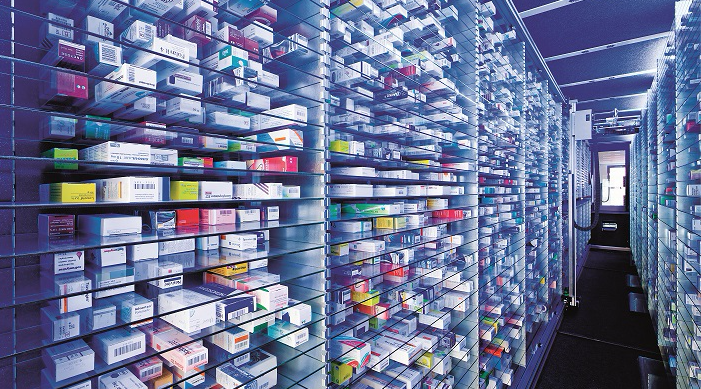
Pharmacists in Europe seem to have stolen a march on their UK colleagues when it comes to automation. We went across the Channel to get three different perspectives on what pharmacists over here can learn from the experiences so far over there.
The manufacturer: Timon Dejonghe
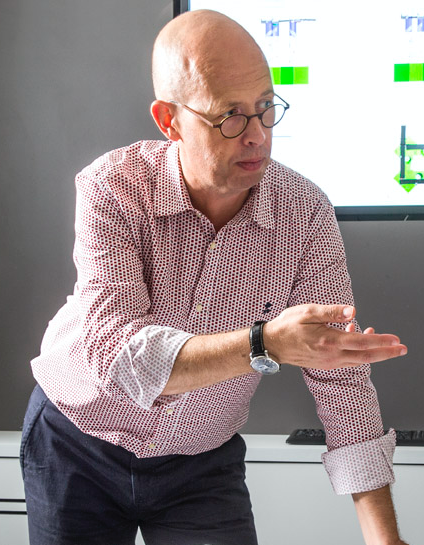 “It’s unique what’s happening in Europe and it can happen in the UK too, but UK pharmacists need to know more,” says Timon Dejonghe, general manger of Belgium’s biggest automation firm, MediTech. An engineer by background, Mr Dejonghe has come a long way since he joined Clement Pharma Concepts, a high quality Belgian pharmacy shopfitting company 11 years ago. He’s a great story teller. And he has a simple message about how he came to automation.
“It’s unique what’s happening in Europe and it can happen in the UK too, but UK pharmacists need to know more,” says Timon Dejonghe, general manger of Belgium’s biggest automation firm, MediTech. An engineer by background, Mr Dejonghe has come a long way since he joined Clement Pharma Concepts, a high quality Belgian pharmacy shopfitting company 11 years ago. He’s a great story teller. And he has a simple message about how he came to automation.
“Look at a traditional pharmacy. They get a prescription, go to the product, bring it back, 20 seconds later the patient is gone. Not a lot of information/advice is given. The pharmacist is highly trained, but they don’t teach how to do business. They assume people will come anyway. They are the only ones who can sell medication,” he says. “The moment I started, I realised: there is something that is not OK. Now, the moment you get out of the doctor’s office, it’s 6pm and I need to get to a pharmacist now, quickly. You get to the pharmacy, within one or two minutes you are out. But what if it’s a dangerous combination: you need to give more advice to patients.
“When you introduce a robot into a pharmacy, all those jobs you don’t like to do can be done automatically, leaving time to talk to clients. That’s the commercial job. Giving advice. The client will get attached: ‘the pharmacist knows my body, what medication I take already. What I can take, what I can’t take.’”
He describes the automation offer very simply. “We take care of all the labour the pharmacy needs – checking products coming in, getting them to the shelves. Those three or four points provide the comfort to the pharmacist. The machine is working for me; I can concentrate on my job as a pharmacist,” Timon says. “That’s why we grew so quickly. A lot of pharmacists thought that was a good idea.”
In his experience, is there a minimum size of pharmacy that would justify automation? He suggests that’s not the right way to think about it. “We have one woman who is alone in Antwerp, a small pharmacy. She hates to sort products out. ‘I am a pharmacist. I am here for my clients. I can afford it.’ Maybe she gets 40 products out a day; she doesn’t care. She loves everything automatic.”
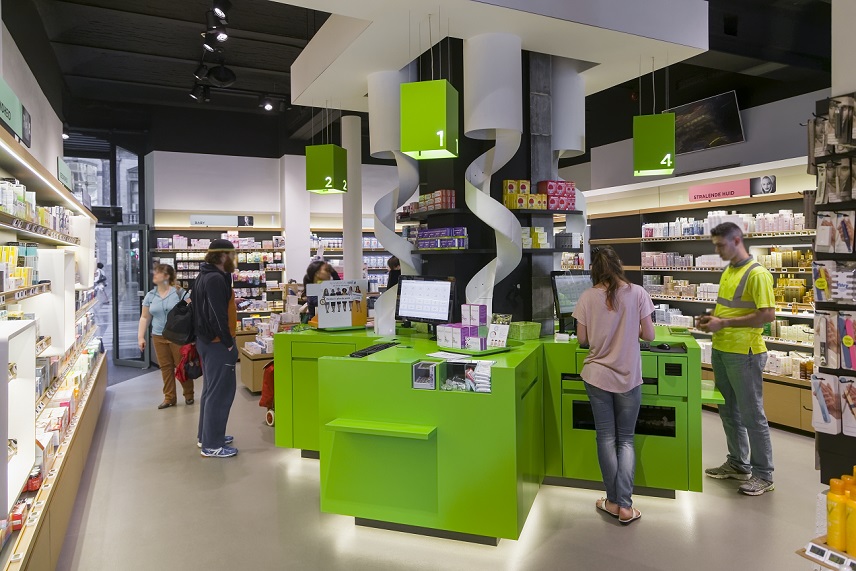 Mr Dejonghe recognises the very clear challenge represented by the tech giants, and particularly Amazon. “I know they are preparing to lobby all the European Governments. They’re saying ‘what is the difference between having a pharmacist in front of you selling medication on prescription physically, and online?’ A lot of pharmacists deliver medicines, but it’s not the pharmacist who takes the medication. Or I come to your pharmacy, you haven’t got the product. You order it, come back… if you have a wall system like we have, SMS, text…your product can be collected in the wall collecting unit. I present myself at 3am at night. What’s the difference, delivery by your son, delivery when you are not there, or online (where there is the best prices, and who can deliver where you want it, in one or two hours)? That’s what I call service.
Mr Dejonghe recognises the very clear challenge represented by the tech giants, and particularly Amazon. “I know they are preparing to lobby all the European Governments. They’re saying ‘what is the difference between having a pharmacist in front of you selling medication on prescription physically, and online?’ A lot of pharmacists deliver medicines, but it’s not the pharmacist who takes the medication. Or I come to your pharmacy, you haven’t got the product. You order it, come back… if you have a wall system like we have, SMS, text…your product can be collected in the wall collecting unit. I present myself at 3am at night. What’s the difference, delivery by your son, delivery when you are not there, or online (where there is the best prices, and who can deliver where you want it, in one or two hours)? That’s what I call service.
“A lot of pharmacists don’t believe me. They think it’s Star Trekky. The world is not changing. It has changed,” he warns, adding that MediTech is already looking at other applications for its technology, from how automated systems could help manage small surgical items or the storage of diamonds in Antwerp. “Look at Nike,” he says. “Big shopping malls want too much rent. Put something out of town. Focus is on the customer, what they really need, the size, the colour. And then, when do you want me to deliver it?”
MediTech started by identifying customer need. “We went to 800 pharmacists with a questionnaire – what is the most annoying thing you have in your pharmacy? Answer: ‘We sell to our clients all day, then after we have to check all our orders and get them into the cupboards into the drawers.’ Pharmacists are professionals, medical guys; they want to stay like that.
“We developed the machine with the demands we got from the pharmacists. They saw that the money was coming from the front of the pharmacy, not from prescriptions. They also needed something new, that would get their stock out of the pharmacy, but they had no options with pharmacy floor space at a premium, particularly in city centres. We came with solutions; we put the medicines on the first floor, or behind the shop.”
“We offer efficiency – products delivered at 2m per second, or between four and seven seconds an item – but we also offer a solution to get more space to sell more, and space for human interactions, which result in other sales not just services.” In fact, automation can force the issue. “People say to us: ‘I’m not a talker’. But they can’t just stand there waiting for the product to arrive. They start to talk to people. How are the kids?, whatever, you make some connection. While you are looking for a product you can’t be talking or selling. That’s what you have to do. Pharmacists have to get out of their comfort zone.”
It’s a message hundreds of pharmacies in Belgium have responded to, in spite of the innate conservatism of the profession. “People who buy robots are not only focused on that robot – they are focused on the robot and whether they should move location, or into bigger premises. It’s always a combination of stuff. People who install a robot don’t say I’m having a robot, and that’s it (maybe one in a hundred). It’s a mindset thing – but it generally creates a big change. It’s all in, or nothing. You will win 30-50 per cent of an FTE in saving in putting products away. But as to what it’s worth, that depends on your range, your attitude, how you deal with customers.”
Pharmacist: Jeroen Oosterlynck
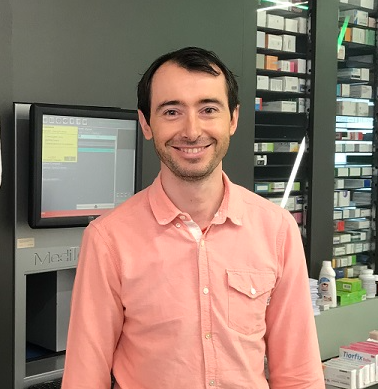 Six years ago, Jeroen Oosterlynck knocked down two houses to build a pharmacy in the Belgian town of Roeselare. Jeroen’s father had operated a pharmacy in the town centre but a move of the business to the suburbs provided scope to think differently. Increased shop floor space, consultation spaces, parking and automation are the essentials of modern day community pharmacy in Belgium.
Six years ago, Jeroen Oosterlynck knocked down two houses to build a pharmacy in the Belgian town of Roeselare. Jeroen’s father had operated a pharmacy in the town centre but a move of the business to the suburbs provided scope to think differently. Increased shop floor space, consultation spaces, parking and automation are the essentials of modern day community pharmacy in Belgium.
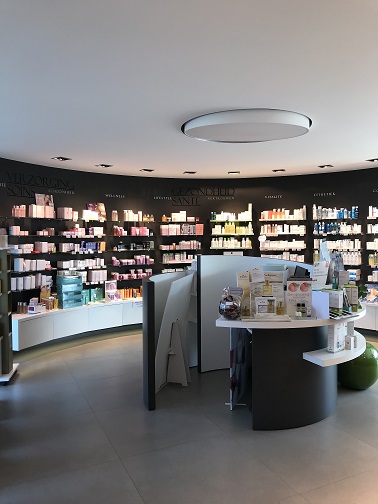 Apotheek Oostpark sits on a busy street arterial road, around half a mile from the town centre. Roeselare’s population of 60,000 is served by 20 pharmacies; right on the average population for a Belgian pharmacy. Three quarters of the floorspace in the pharmacy is taken up by retail, a robot occupies most of the other 100sq metres.
Apotheek Oostpark sits on a busy street arterial road, around half a mile from the town centre. Roeselare’s population of 60,000 is served by 20 pharmacies; right on the average population for a Belgian pharmacy. Three quarters of the floorspace in the pharmacy is taken up by retail, a robot occupies most of the other 100sq metres.
The pharmacy is currently staffed by Jeroen and his wife, both are pharmacists. The robot was installed for day one. “If you have a big idea of a new building, you start with the best things that are available,” says Jeroen. “The robot is 12 metres long, it is how we have organised the pharmacy. If you don’t have a robot, and decide to have one, you will have to find space for it. We are young, so we do new things.”
Prescription transactions are completed in front of the patient, with record keeping, product ordering and checks completed via a screen on the pharmacy counter. The medicines are delivered by the robot into a tray immediately behind the consultation point. Jeroen is clear about the benefits to his customers from setting up this way. “Sure, you lower the cost of people to help you, but you also give patients a lot of time. You stay in front of them. You look at the prescription, you scan it, you are already looking at the dosage, the side effects, and in one minute the product comes, you turn and you take it, you give it to the patient.”
He says the people side is very important. It’s a very competitive market, not only locally, but increasingly from online players and parapharmaceutical stores (a continental version of a drugstore) too. “My father was 30 years a pharmacist and almost nothing changed. We have been here for six years and what you have to do for patients is a lot different. The numbers are important at the end of the year, but you have to love your job. We see that if you give people good information they are satisfied and come back.”
Apotheek Ostpark offers a very personal service, six days a week, 8.30 to 7 on regular weekdays, with an hour for lunch. “I know them by name. Hello, Hans? Hello, Louis? Everything fine? How was your weekend? You become like a coffee shop. People don’t have to come because they are sick, they know you, you have a relationship.” The Government also is focused on good service. Jeroen says: “We do group sessions now in the pharmacy for things like diabetes; and we have almost 500 home pharmacy patients; the pharmacist gets €30 per year to manage you at home.”
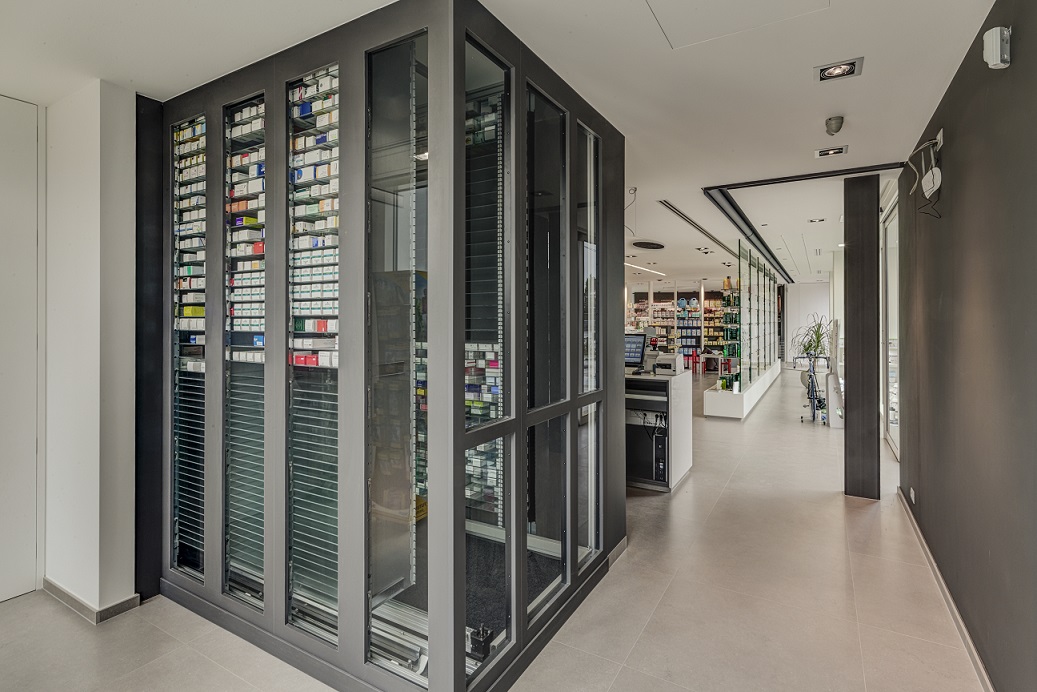 Like Frédéric Burdah in Paris (see below), the couple are increasingly focused on front of shop, and using the personal service opportunity facilitated by the robot to drive sales. “Prescription margins are very low; pharmacies are investing again in cosmetics, vitamins, hair products,” says Jeroen. When the pharmacy opened, the retail space was empty. Now the pharmacy offers customer evenings to demonstrate upscale cosmetics, has a large mother and baby section, stocks fitness ranges, vitamins and complementary therapies, spectacles and even honey. The pharmacy has a website and offers a discount card too.
Like Frédéric Burdah in Paris (see below), the couple are increasingly focused on front of shop, and using the personal service opportunity facilitated by the robot to drive sales. “Prescription margins are very low; pharmacies are investing again in cosmetics, vitamins, hair products,” says Jeroen. When the pharmacy opened, the retail space was empty. Now the pharmacy offers customer evenings to demonstrate upscale cosmetics, has a large mother and baby section, stocks fitness ranges, vitamins and complementary therapies, spectacles and even honey. The pharmacy has a website and offers a discount card too.
Even so, Jeroen is not resting on his laurels. The couple are considering installing an automated collection point onto the car park to serve out of hours – one pharmacy in the town already has one – and also large instore product display video screens increasingly common in European pharmacies. “People can look at products while they are waiting; in the future, you will be able to choose a product, it comes out of the robot, you may be able to pay without having to wait”.
Pharmacist: Frédéric Burdah
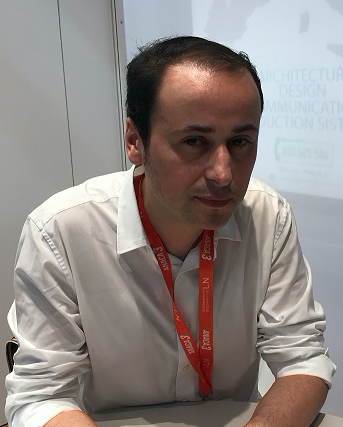 Frédéric Burdah’s automation journey started with an argument with the staff. “Nobody wanted to organise the products, to tidy up,” he says “I’d seen some robots 10 years ago, but they were not up to scratch. In 2016, a fully automated system arrived. We got a robot we could dump all the medicines into and it would all be put away. The staff didn’t have to touch any boxes anymore.”
Frédéric Burdah’s automation journey started with an argument with the staff. “Nobody wanted to organise the products, to tidy up,” he says “I’d seen some robots 10 years ago, but they were not up to scratch. In 2016, a fully automated system arrived. We got a robot we could dump all the medicines into and it would all be put away. The staff didn’t have to touch any boxes anymore.”
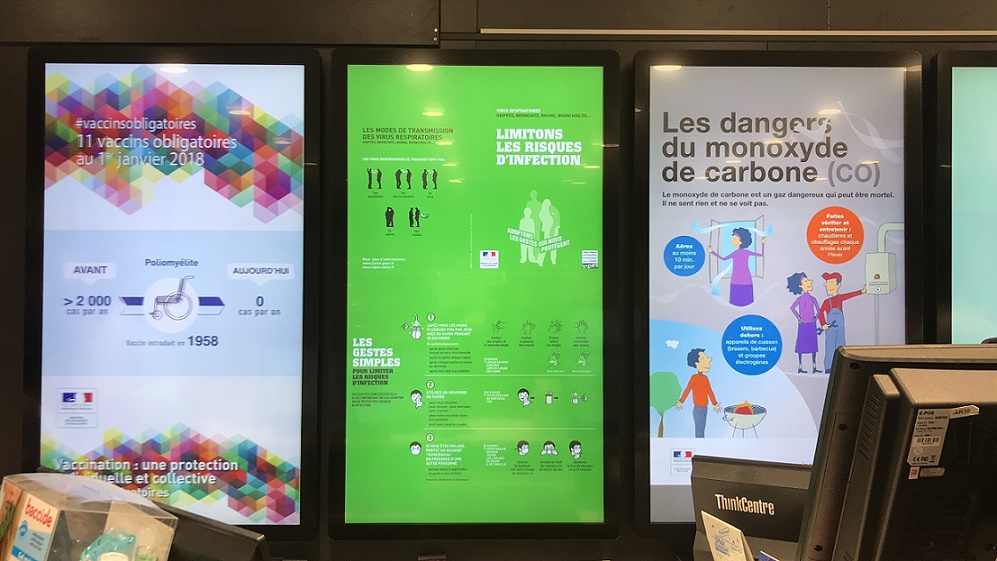 As well as avoiding staff downing tools, Frédéric says the robot has been the catalyst to dramatic growth in his business, Pharmacie des Chardonnerettes, once the smallest of 25 in the north Paris suburb of Sarcelles. “Now I am number one in terms of turnover, up from €500,000 to more than €6m in 15 years” he says. “We had three staff at the beginning, now there are 18, because we have time to do many different things.
As well as avoiding staff downing tools, Frédéric says the robot has been the catalyst to dramatic growth in his business, Pharmacie des Chardonnerettes, once the smallest of 25 in the north Paris suburb of Sarcelles. “Now I am number one in terms of turnover, up from €500,000 to more than €6m in 15 years” he says. “We had three staff at the beginning, now there are 18, because we have time to do many different things.
“The first automation was the cash handling system; there used to be many mistakes. Now, because people are moving across to cashless, we have so much more money at the end of the day.” As well as the dispensing robot, he now has digital screens displaying products and prices. “We used to sell, three, maybe four thousand products a month, with lots of back and forth for stock. We now sell three, four times that.”
The robot offers “speed, safety. We’ve avoided a lot of mistakes that come with lots of generics.” Now he says he can keep track of all the prescriptions for all of his patients on his phone, using cloud technology, allowing him to work remotely.
But the biggest impact has been on the opportunities Frédéric has been able to take because the robot has freed up his time not only to do what he was doing more efficiently, but also to think about what more he could be doing as a pharmacist. “The pharmacy is in a deprived area, my patients have multiple morbidities. I have to move a lot of medicines. Today, I couldn’t work without it,” he says. “Now, thanks to automation, if some people are off sick, it doesn’t slow us down. We can function with only three people; without it we’d need eight or nine. We are both more efficient and we save time.”
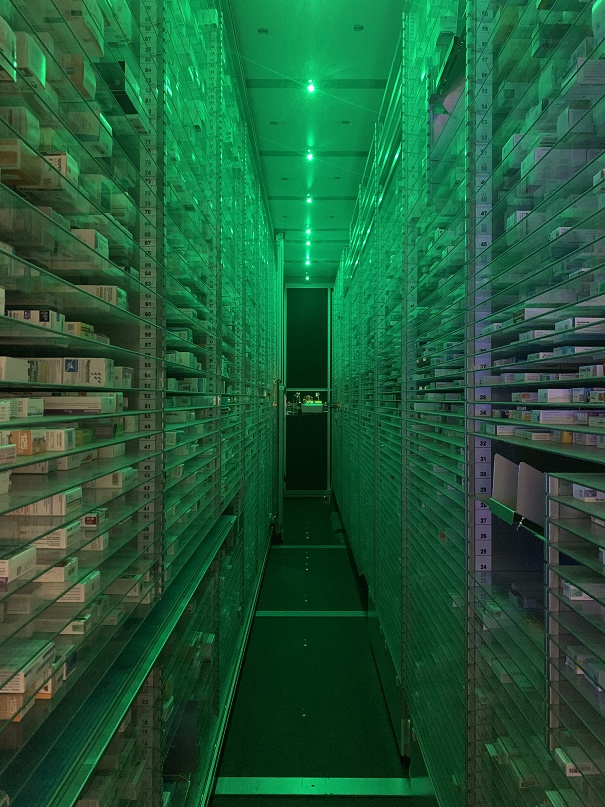 The robot has allowed Frédéric to expand into other areas. He says he now takes care of 10 centres for disabled people in the suburb, using a pouch/unidose system. “I am doing all the co-ordination between the hospital, the disability centres and the pharmacy. I have an amazing team doing this, and a Spanish team that are developing the software for the unidose system. I didn’t need to fire anyone because of automation. On the contrary, I am hiring people.”
The robot has allowed Frédéric to expand into other areas. He says he now takes care of 10 centres for disabled people in the suburb, using a pouch/unidose system. “I am doing all the co-ordination between the hospital, the disability centres and the pharmacy. I have an amazing team doing this, and a Spanish team that are developing the software for the unidose system. I didn’t need to fire anyone because of automation. On the contrary, I am hiring people.”
Next steps for Frédéric is further business growth. “I am going to increase the space of my pharmacy to 2,500sq metres (it’s currently 140sq metres). Technology in the basement, specialists, dentist, physio, everything. We have a partnership with a laboratory to do diagnostic testing. Nurses will do vaccinations. And I will have doctors onsite. I can help them. They are working like they did 50 years ago! The service to the patient will be so much better if we digitise that system too.”
His enthusiasm is infectious: “I’d like to be first,” he says. “We are now face to face with customers. We don’t have any back office. I created a very successful business for medical devices for disabled people and I am now going to create a showroom for these products. I could not have done this without automation. If I only wanted the money I would just sell up.”
